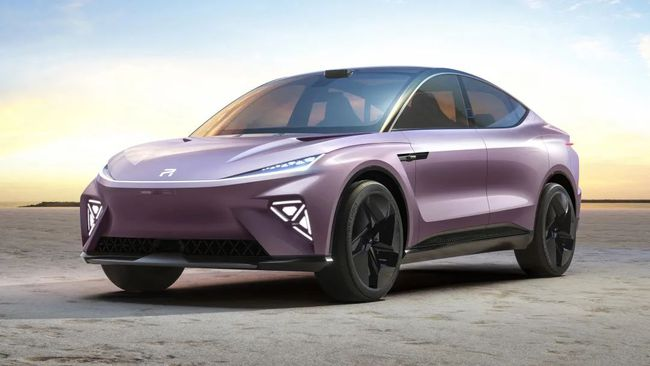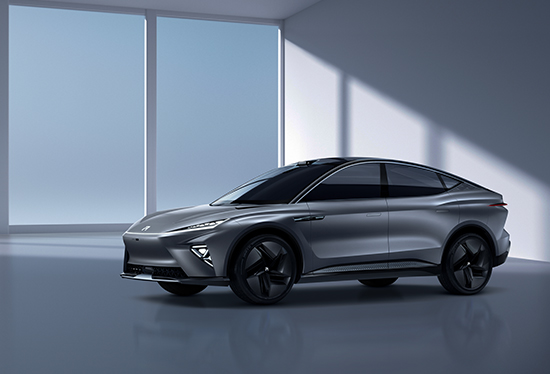*This article is reproduced from the autocarweekly public account
Author: Du Debiao
Last time I saw SAIC R, it was still a new energy sub-brand under SAIC Group, but now it has become an independent company.
Yesterday, SAIC Group announced the establishment of RisingAuto Automotive Technology Co., Ltd. (SAIC R) to carry out market-oriented operations in the form of an independent company. The registered capital is 7 billion yuan, of which SAIC contributes 6.65 billion yuan and the employee shareholding platform contributes 350 million yuan.
At the same time, RisingAuto Automotive is committed to creating a high-end new energy intelligent mobile space, integrating fashion into intelligent pure electric driving and riding experience…and so on.
Although the number of words is small, there is a lot of information. Here, several keywords of “new car-making” are collected: brand-independent as a company; employee shareholding; light asset operation; targeting the high-end market, and so on.
From the organizational structure, the R brand (RisingAuto Automotive) operates independently as a company, just like IM Auto. In theory, the independent R cars are “parallel” to the SAIC passenger cars, directly reporting to the group.
This reflects the priority of the business. Similar to Hongqi’s independent business from FAW Car, it indicates that “independent business” and “centralized management by the group” have advantages in terms of efficiency, and can get direct empowerment from the group.
In the background, the structure of the new energy market is evolving from a “dumbbell-shaped” to a “spindle-shaped” structure, that is, the number of high-end brand products is increasing, and the main A-level market where traditional fuel vehicles used to be located is showing a waistline characteristic.
As the structural evolution accelerates, the competition for high-end models is becoming increasingly fierce. New brands and Internet players have successively emerged, creating more layers of competition for resources (such as talents) and psychological positioning of consumers. On the other hand, data shows that the penetration rate of China’s new energy vehicle market is further strengthening, increasing from 5.8% in the same period last year to 13.7%. The market space is vast. Therefore, the R brand needs to take advantage of the situation, and seize the position with a more optimized organizational structure in the new track.
Currently, the R series has released four products, RisingAuto ER6, MARVER R, R-AURA, and ES33, of which the latter two are not yet on the market, but are expected to compete in different levels of the market with IM Auto. IM Auto’s first product is currently priced at 408,800 yuan, while the R series mainly focuses on the area above 200,000 yuan.

Logically, high-end intelligent products need to give the market a brand-new cognition from the brand level. This approach is already the consensus of most players in the industry, such as Xpeng, Aiways, and so on. Meanwhile, a certain degree of concentration is required in terms of business form, with the mother brand providing empowering support in the background, while the halo of high-end sub-brands also nourishes the mother brand.In terms of resources, FEV will integrate SAIC’s resources and experience in research and development, manufacturing, and services, and provide technical support and solutions at the technical level by SAIC Technical Center, while production will be undertaken by SAIC Passenger Vehicle Division. This coordinated effort can achieve rapid landing of products, and SAIC’s manufacturing experience and quality control system will ensure quality. At the same time, the blood relationship among subsidiaries is conducive to reducing communication costs, which are advantages of traditional forces establishing new energy subsidiaries.
In addition, the advantage of light assets is also to maximize operational efficiency, give full play to the creativity of independent companies, have greater autonomy, and have greater exploration space in corporate culture and operating models. For example, employee stock ownership means co-entrepreneurship and creates more shared values and common interests. At the same time, the attributes of light assets reduce the risk factor.
Regarding “supporting facilities”, SAIC invested (93.24% of the total capital) in the “Zero Bundle Software Subsidiary” as early as last year. According to SAIC’s vision, Zero Bundle provides “cloud-based integrated full-stack solution” for intelligent vehicles, covering central centralized electronic architecture, SOA software platform, intelligent vehicle data factory, full-stack OTA, and network security four basic technologies.
Independence in organization and specialization in operation provide a reasonable model basis for operational efficiency and research and development. At the same time, the parent company provides basic hardware support. The independent model of FEV is established on the basis of risk sharing and collaborative efforts. New energy products test innovation capabilities while also testing heritage. Sustainability is the fundamental factor in progress.
SAIC’s capital and manufacturing strength are the foundation, and independent business is “new”. Under the traditional forces, new tracks still have a sense of offense and defense. When capital investment slows down and high-quality IPO investment targets are sought, FEV is a good target with both offensive and defensive potentials.
SAIC Vice President Lan Qingsong once said that our thinking used to belong to industrial thinking, and now we also use the capital market. But the understanding of the capital market is not just about money, but resources. SAIC needs external pressure and market mechanisms internally.
This is both the gameplay and the ideological transformation, which not only explains SAIC’s previous proposal of industrial co-creation but also contrasts with the original intention of IM’s introduction of external capital. At the same time, the independence of FEV and the exploration of the model also reflect SAIC’s original intention to innovate.
Therefore, “FEV” not only represents the vision of “cashiering imagination with technology” as stated by the official, but also represents a community that can be extraordinary and achieve excellence.Compared with other independent brands and new players in the market, the differentiation of SAIC’s strategy lies in being the only player that launches independent brands for different market segments and sets up separate companies in terms of organizational structure. In fact, it is somewhat like applying the successful marketing strategies of the traditional fuel car market to the intelligent new track.
Although the market structure of new energy vehicles is currently defined as “spindle-shaped”, the upper part of the spindle is collectively referred to as the middle-to-high-end camp, but in fact, the consumer groups also have differences. Therefore, Fevan and IM actively further differentiated the consumer groups and adopted targeted demands. To some extent, they may also represent some consumer samples. In different levels of “middle-to-high-end intelligent car models”, they have different demands, and Fevan and IM have provided channels and references for us to observe the market and consumer groups.
The dynamic adjustment and group differentiation that is being promoted by the interaction between the original equipment manufacturers and consumers may be the next theme of the new energy vehicle market.
This article is a translation by ChatGPT of a Chinese report from 42HOW. If you have any questions about it, please email bd@42how.com.
